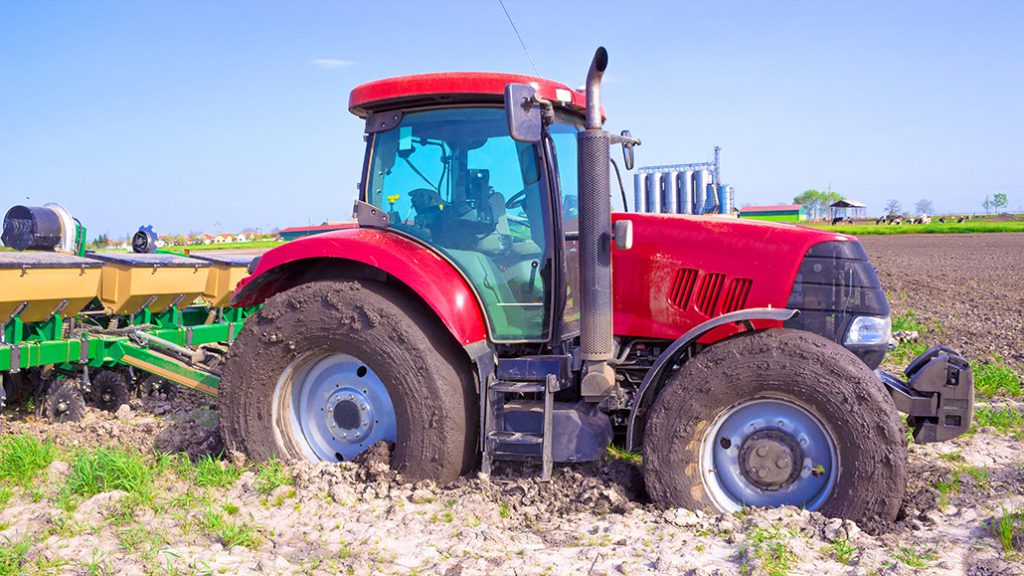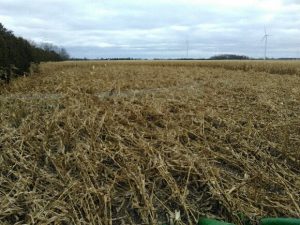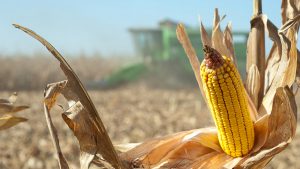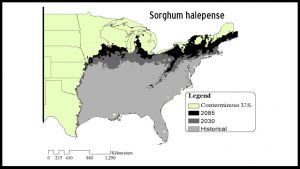Field mitigation
REPAIRING DAMAGED FIELDS

MANY ONTARIO FARMERS planted the 2019 crop in less than ideal conditions. Persistent rain gave fields little chance to dry out and farmers made tough decisions to take advantage of any opportunity they had to get seeds into the ground, even if that meant smearing them in.
“There was no right or wrong decision this year, given the way the spring rolled out,” says Ian McDonald, crop innovations specialist with the Ontario Ministry of Agriculture, Food and Rural Affairs (OMAFRA).
For some, the gamble they took didn’t pay off. In the worst cases, tractors and planters were stuck deep in mud. McDonald recalls seeing one tractor being pulled out by a heavy highway tow truck from the middle of the field — instead of going around a wet spot, the farmer tried to plant through it. Not only did the stuck equipment create a problem, but the heavy tow likely added to compaction concerns.
This type of field damage is obvious but even if you didn’t get stuck you could have damaged your field. Farmers who pushed it likely created tracks across their field and created a rough, cloddy surface by working the ground when it was too wet.
And this fall, once harvest is complete, farmers are going to need to address the damage, the deep ruts, and the compaction in their fields. Short-term fixes will get the ground ready for next year’s crop; but it is not going to be a quick nor easy fix to restore soil structure for the long-term.
SHORT-TERM
“Even a strong advocate of no-till, like me, recognizes that with the damage we’ve seen this year tillage has to be utilized,” says McDonald. “The key is, just fix what needs fixing — don’t deep rip the whole field when only small portions require it — and use the least aggressive method possible based on the area you need to repair.”
McDonald notes that corn fields will likely be the most difficult to address, because the opportunity to get in them will be later in the season when soils are moist. The ground may be a bit moist, but not too wet; generally, McDonald says if the ground isn’t fit to plant, it shouldn’t be worked either.
Anne Verhallen, soil management specialist at OMAFRA, adds that, depending on the fall weather, those areas that need to be deep ripped may have to wait for better conditions another year.
“Make use of tillage to fill in ruts and washouts but make note of the areas that will need particular attention in the future — target those areas for winter wheat to allow for deep ripping under dry conditions and then follow with a cover crop to improve and create stable soil structure,” she recommends.
Another short-term fix to look at which could reduce future issues is to assess the drainage in your field. Verhallen says you need to fix any problems or washouts you may have noted with your tile.
“You should consider whether you need more tile, which isn’t a solution to better soil health, but you have to get the system functioning,” she notes while adding that you need good soil structure in order to get water to the tile.
Farmers also need to be cautious when it comes to how often and what equipment they drive over a newly repaired field. Compaction issues are only going to get worse with every pass, especially if it’s a heavy load such as a manure tank. It’s important to make sure you have the right tires with the right tire pressure to reduce the impact underground. McDonald recommends utilizing inflation/deflation systems to have more control in reducing compaction when dealing with variable conditions field to field.
“Compaction and fixing it and preventing it is a whole system approach that takes time — like all good soil management practices,” Verhallen adds.
LONG-TERM
That’s why, once you have smoothed out the ruts, it doesn’t mean your work is done.
“The underlying damage is still there, and it is going to take considerable time to repair,” says McDonald, noting that wet years like this show us the benefits of long-term soil health management strategies that involve no-till, cover crops, and diverse crop rotations. Getting living roots in the system over all months of the year should be the goal.
Verhallen encourages farmers to take a hard look at their crop rotation.
“Do you get wheat in your rotation often enough? Is there an opportunity for forages? Do you have any other opportunities to add organic matter?,” she asks. “Organic amendments improve soil structure over time and other opportunities to get more roots in the system will create more biopores and support soil structure and internal drainage.”
Using a whole system approach to managing your fields for the long-term could also mean taking some acres out of production. Chances are, many of the wet areas you had the most trouble with this spring are always problem areas, and they likely don’t have optimum yield potential.
McDonald’s research into the use of precision agriculture technology has connected him with some farmers who have used their data to more precisely calculate their cost of production per acre. “When it shows where they are losing money in a field, they are willing to take some parts out of the system. And with guidance systems and on/off planting settings it’s become easier to do.”
The combination of short- and long-term fixes to your field may make you rethink your approach to crop production and water management, and it’s not a bad thing to consider different options.
“A tough year is tough on everyone. but I hope we collectively learn what small changes we can make to guide us toward more resilience in our soils in years to come,” says McDonald. •


























